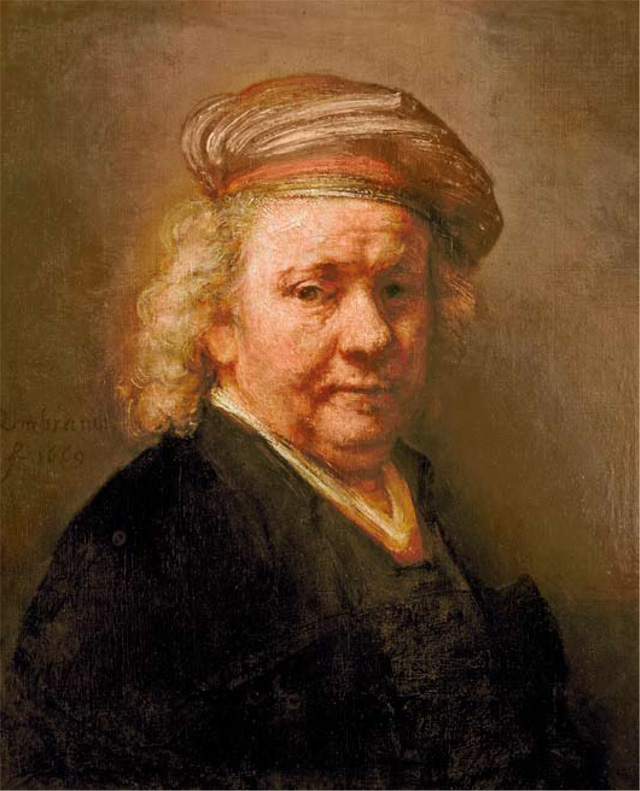My Favourite Painting: Archbishop of Canterbury
The Archbishop of Canterbury Dr Rowan Williams chooses his favourite painting for Country Life.


Self Portrait, 1669, by Rembrandt van Rijn (1606–69), Mauritshuis, The Hague, The Netherlands. Bridgeman Images.
The Archbishop of Canterbury says: ‘Rembrandt in his maturity always shows us faces that look lived in: not smooth, not finished, expressive of time that’s passed. Painting faces like this is an act of mercy. It is perhaps how God sees human faces, neither completely good or bad, just marked by time, failure or pain, needing to be contemplated with acceptance. To paint your own face thus shows a self-awareness and –an odd, paradoxical virtue –a sort of compassion towards yourself that is the very opposite of self-pity.’
Dr Rowan Williams was confirmed as the 104th Archbishop of Canterbury in 2002.
Art critic John McEwen comments: 'This painting is the last of Rembrandt’s 80 selfportraits. He looks older compared with others from the Indian summer of his career, such as those at the National Gallery and Kenwood (Favourite Painting, February 10), but still displays his jaunty taste for a ‘hat’; he wears one in three quarters of his self-portraits. The look is pitiless and pitying. It corroborates the received wisdom that Rembrandt is the all-seeing master of the soul, the ultimate explorer of the psychological depths. Therefore, it is disconcerting to know that this most sympathetic portrayer of Christ, as well as his mortal self, never made it to the very top of his profession, despite a dazzling start, and had a decidedly disagreeable character, too.
During his life, Rembrandt was certainly recognised as a master. Cosimo III de Medici, who bought one of the selfportraits, visited ‘the famous painter’ in Amsterdam in 1667. Indeed, the late self-portraits were speedily snapped up by royal collectors. However, to mankind’s loss, Rembrandt was never a court painter, and he was never even commissioned by a burgomaster. His personality was the main problem. There is abundant evidence that he was bitter, vindictive, untrustworthy and money-grubbing. He sank so low as to steal some of his daughter’s savings, and was notorious for not paying debts, especially if they were interest free. At least his brilliance excuses his arrogance, which made him the one artist of Holland’s artistic ‘golden age’ to sign himself regally with his first name only. That modern Dutch genius Van Gogh followed suit, but we have not let Vincent stick.'
This article was first published in Country Life, March 31, 2010
Sign up for the Country Life Newsletter
Exquisite houses, the beauty of Nature, and how to get the most from your life, straight to your inbox.
Country Life is unlike any other magazine: the only glossy weekly on the newsstand and the only magazine that has been guest-edited by HRH The King not once, but twice. It is a celebration of modern rural life and all its diverse joys and pleasures — that was first published in Queen Victoria's Diamond Jubilee year. Our eclectic mixture of witty and informative content — from the most up-to-date property news and commentary and a coveted glimpse inside some of the UK's best houses and gardens, to gardening, the arts and interior design, written by experts in their field — still cannot be found in print or online, anywhere else.
-
 Everything you need to know about private jet travel and 10 rules to fly by
Everything you need to know about private jet travel and 10 rules to fly byDespite the monetary and environmental cost, the UK can now claim to be the private jet capital of Europe.
By Simon Mills
-
 'I'd willingly give a year of my life for a fortnight there': The green dream that is the garden of Derreen
'I'd willingly give a year of my life for a fortnight there': The green dream that is the garden of DerreenExotic woods, labyrinths of narrow, mossy paths and thousands of tree ferns make this an internationally important garden, writes Charles Quest-Ritson. Photographs by Jonathan Hession.
By Charles Quest-Ritson
-
 My favourite painting: Allan Mallinson
My favourite painting: Allan MallinsonMilitary historian Allan Mallinson picks an image of 'faith, generosity and ultimate sacrifice'.
By Charlotte Mullins
-
 My Favourite Painting: Piet Oudolf
My Favourite Painting: Piet Oudolf'One cannot sense whether he is far out on the ocean or closer to shore, or what he may be watching or feeling in that moment as he stares towards the beach.’
By Country Life
-
 My Favourite Painting: Mary Plazas
My Favourite Painting: Mary Plazas'There is compassion, awe, humility, a knowing yet a questioning in the glistening eyes. It moves me, it inspires me beyond the need to know.’
By Country Life
-
 My favourite painting: Robert Kime
My favourite painting: Robert KimeRobert Kime shares his fondness for New Year Snow by Ravilious
By Country Life
-
 My Favourite Painting: Anna Pavord
My Favourite Painting: Anna PavordAnna Pavord chooses a picture which reminds her of where she grew up
By Country Life
-
 My favourite painting: The Duchess of Wellington
My favourite painting: The Duchess of WellingtonThe Duchess of Wellington chooses her favourite painting for Country Life.
By Country Life
-
 My favourite painting: Maureen Lipman
My favourite painting: Maureen LipmanMaureen Lipman chooses her favourite painting for Country Life.
By Country Life
-
 My favourite painting: Jacqueline Wilson
My favourite painting: Jacqueline Wilson'I looked at this painting and decided to write about a Victorian circus girl one day'
By Country Life